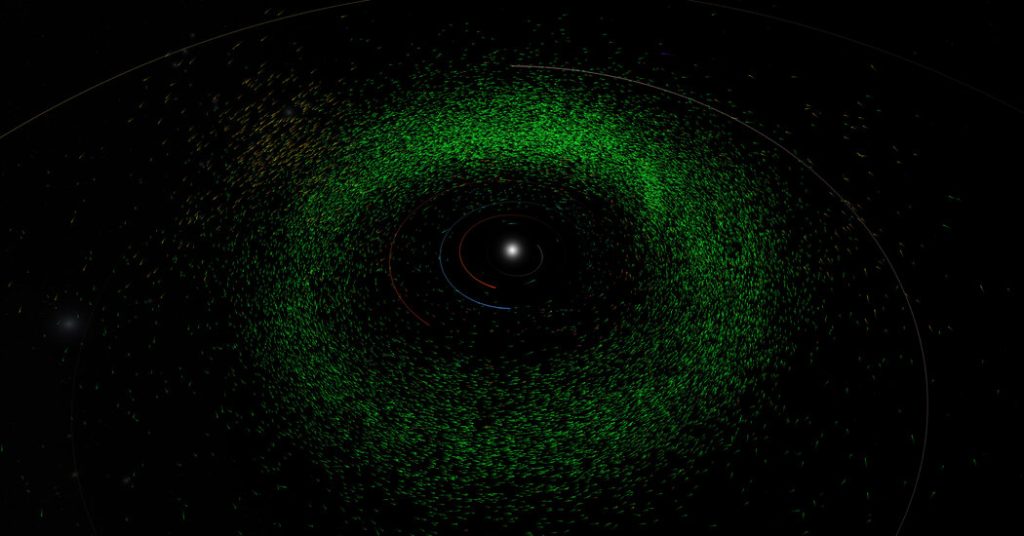A team of researchers recently developed an algorithm that sifts through old images of the night sky to discover asteroids that had been previously overlooked. They have identified 27,500 new solar system bodies, more than were discovered by all telescopes around the world last year. This new method is seen as a “sea change” in astronomical research, as it could revolutionize the way we search for potential threats such as near-Earth asteroids that may be on a collision path with Earth. The algorithm, known as THOR, allows scientists to connect dots of light seen in different images on different nights, identifying moving objects that are actually asteroids that have shifted positions as they orbit the sun.
The discoveries made by the Asteroid Institute and the University of Washington include about 100 near-Earth asteroids among the 27,500 newly identified solar system bodies. These near-Earth asteroids do not appear to pose any immediate threat to Earth, but the algorithm could prove to be a valuable tool in spotting potentially dangerous asteroids. The research conducted by these scientists will assist in planetary defense efforts undertaken by organizations like NASA and others around the world. Most of the new space rocks identified lie in the main asteroid belt between Mars and Jupiter, as well as in the orbits of Jupiter’s Trojans and much farther out in the Kuiper belt beyond Neptune.
Historically, astronomers have relied on multiple observations of moving objects in the night sky to track their orbits and identify new planets, asteroids, comets, and Kuiper belt objects. However, the THOR algorithm allows for the identification of asteroids across different images taken on different nights, connecting dots of light to reveal these moving objects. This was made possible through the use of Google Cloud, a distributed computing system, which was able to perform the necessary calculations in about five weeks. The advancements in software tools have made it easier for scientists to tap into computing power and conduct groundbreaking research.
The THOR algorithm’s capabilities could potentially transform the operations of the upcoming Vera C. Rubin Observatory in Chile, which is expected to begin operations next year. The telescope will repeatedly scan the night sky to track changes over time, and with THOR, it could cover twice as much area without the need for a second pass. This increased efficiency could lead to the discovery of more asteroids, potentially meeting a mandate passed by Congress in 2005 to locate 90% of near-Earth asteroids that are 460 feet in diameter or larger. These developments are paving the way for new possibilities in astronomical research, demonstrating the power of advanced algorithms and computing systems in unlocking the secrets of the universe.


